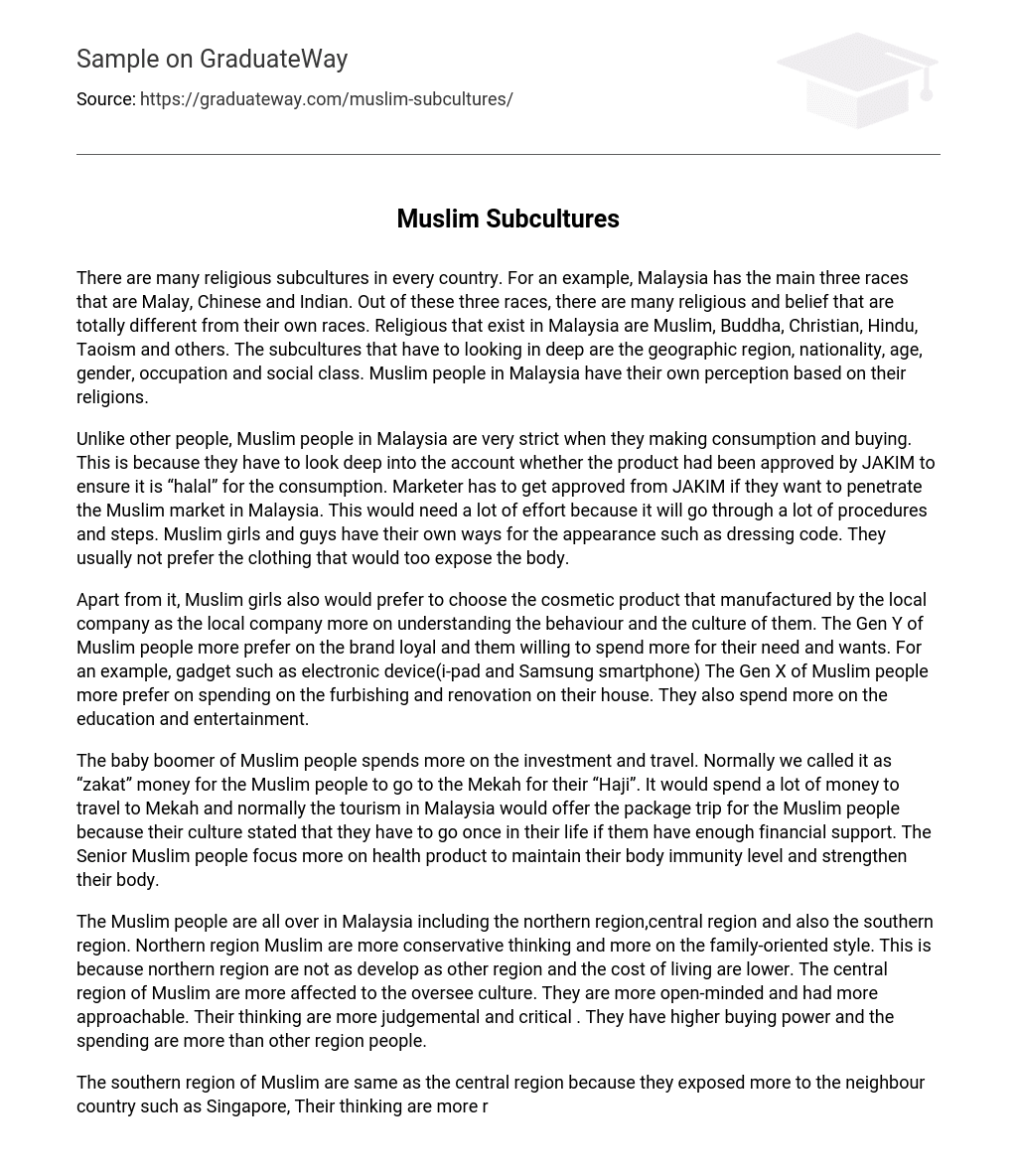Malaysia is a nation with a diverse religious landscape, characterized by a rich tapestry of religious subcultures. The Malay, Chinese, and Indian communities each have their own distinct beliefs that contribute to this diversity. In Malaysia, there are various faiths including Islam, Buddhism, Christianity, Hinduism, Taoism, and others. To fully understand these subcultures, it is important to consider factors such as geographical region, nationality, age groupings or generational differences , gender distinctions , occupation diversity , and social classes. The religion practiced by Malaysian Muslims greatly shapes their individual perspectives.
Muslim people in Malaysia have strict guidelines when it comes to consumption and purchasing decisions. They carefully consider whether a product has been approved by JAKIM to ensure it is “halal” for consumption. In order to target the Muslim market in Malaysia, marketers must obtain approval from JAKIM. This process requires a significant amount of effort as it involves navigating through various procedures and steps. Additionally, Muslim individuals have their own dress codes and tend to avoid clothing that is overly revealing.
Apart from that, Muslim girls also prefer to choose cosmetic products manufactured by local companies because these companies have a better understanding of their behavior and culture. The Generation Y of Muslim individuals are more brand loyal and willing to spend more on their needs and wants. For example, they prefer to invest in gadgets like electronic devices such as iPads and Samsung smartphones. On the other hand, the Generation X of Muslim individuals prefer to spend more on renovating and furnishing their homes. They also allocate a higher budget for education and entertainment.
The older generation of Muslims tend to spend more on investments and travel. This type of spending is commonly referred to as “zakat” money, which is used by Muslims to go on a pilgrimage to Mecca, known as “Haji”. Traveling to Mecca can be quite expensive, and in Malaysia, tourism agencies often offer package trips to cater to the cultural belief that Muslims must make this journey at least once in their lifetime if they have sufficient financial means. Additionally, senior Muslim individuals prioritize health products to boost their immune system and enhance their physical well-being.
The Muslim population in Malaysia is distributed across the country, encompassing the northern, central, and southern regions. In the north, Muslims lean towards conservatism and place importance on family values due to the region’s underdevelopment and lower living expenses. Conversely, Muslims in the central region are influenced by foreign cultures, displaying open-mindedness and approachability but also tending to be more judgmental and critical in their thinking. Moreover, they possess greater purchasing power and exhibit higher expenditure relative to individuals from other regions.
The southern region of Muslim is similar to the central region as they are more exposed to neighboring countries like Singapore. Their thinking tends to be more realistic and materialistic. The majority of Muslim occupations are in government jobs and education, particularly in teaching. This is due to their special rights and advantages granted in the constitution. Among the lower social class of Muslims, the majority work as hawkers or farmers. These subcultures typically only spend on their basic needs and rely on government subsidies for support.





